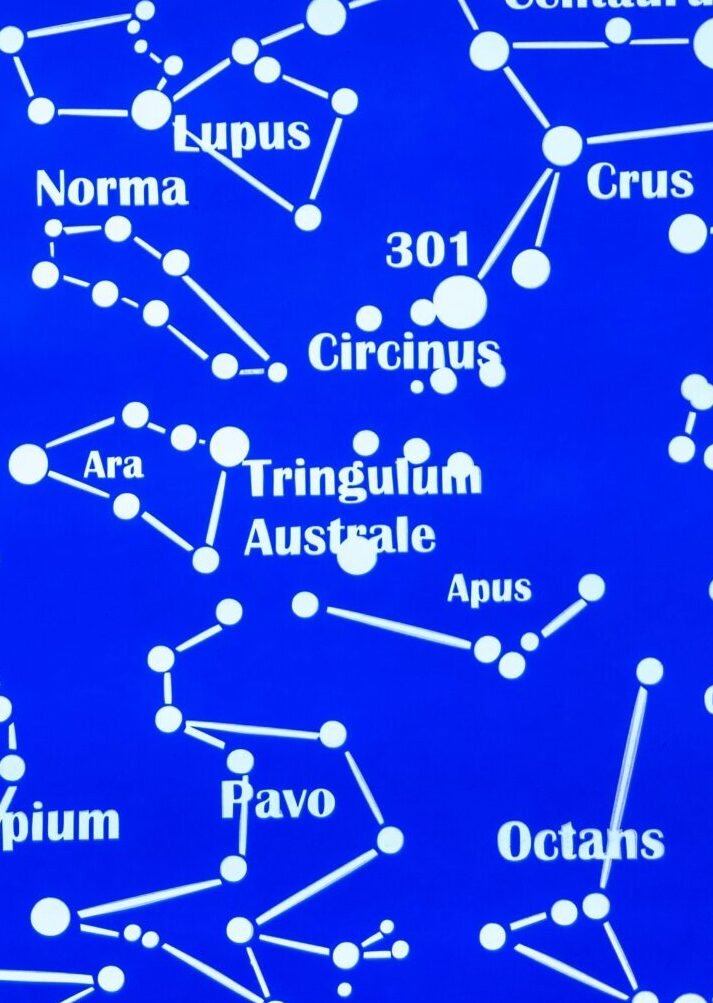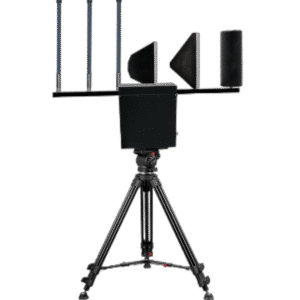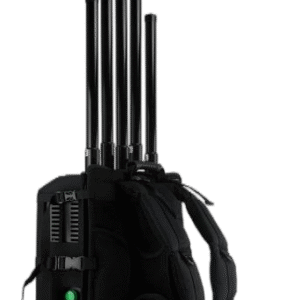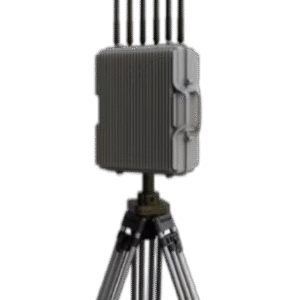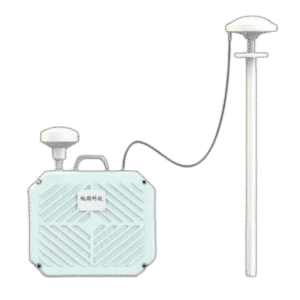The exponential proliferation of unmanned aerial vehicles has transformed low-altitude airspace from an underutilized resource into a congested, contested domain requiring sophisticated management solutions. The TYPT-001 Low-Altitude Security Integrated Monitoring and Control System emerges as a revolutionary software platform that transcends traditional counter-drone approaches, offering instead a comprehensive ecosystem for airspace governance.
Unlike hardware-centric solutions that focus solely on threat neutralization, the TYPT-001 adopts a holistic philosophy—treating low-altitude airspace as a manageable resource requiring intelligent orchestration rather than mere defense. This paradigm shift acknowledges that the future of urban airspace will involve thousands of legitimate drone operations daily, necessitating systems capable of distinguishing between authorized activities and genuine threats with surgical precision.
The platform’s architecture embodies the principle of “cooperative security”—leveraging big data analytics, artificial intelligence, and multi-sensor fusion to create a living, breathing representation of the aerial environment. By integrating disparate detection systems, regulatory databases, and operational protocols into a unified command structure, TYPT-001 transforms reactive security postures into proactive airspace management strategies.
Technical Specifications
Core Platform Capabilities
| System Component | TYPT-001 Specifications | Industry Standard | Performance Advantage |
|---|---|---|---|
| Simultaneous Sensor Integration | 500+ heterogeneous sensors | 50-100 sensors | 400-900% scalability |
| Real-time Track Processing | 10,000 concurrent tracks | 1,000-2,000 tracks | 400-900% capacity |
| Data Ingestion Rate | 50 GB/hour | 5-10 GB/hour | 400-900% throughput |
| Alert Response Latency | <100 milliseconds | 1-5 seconds | 10-50x faster |
| Geospatial Coverage | 50,000 km² per instance | 5,000 km² | 10x area management |
| User Concurrency | 1,000 simultaneous operators | 50-100 operators | 10-20x multi-tenancy |
| Historical Data Retention | 5 years online | 90 days | 20x compliance capability |
Advanced Architecture Components
1. Multi-Sensor Fusion Engine
- Kalman-based track correlation across heterogeneous sensors
- Probabilistic data association with 99.9% accuracy
- Automatic sensor registration and calibration
2. AI-Powered Threat Assessment
- Deep learning models trained on 10 million+ flight patterns
- Behavioral anomaly detection with 0.1% false positive rate
- Real-time intent classification within 2 seconds
3. Distributed Processing Framework
- Kubernetes-orchestrated microservices architecture
- Horizontal scaling supporting 100,000 tracks/second
- Geographic load balancing across data centers
Applications Portfolio
Deployment Scenarios Comparison
| Application Domain | Traditional Approach | TYPT-001 Solution | Operational Impact |
|---|---|---|---|
| Airport UTM Integration | Separate systems for each function | Unified platform with FAA/EASA interfaces | 75% reduction in controller workload |
| Smart City Management | Fragmented municipal departments | Centralized urban air mobility dashboard | 90% faster emergency response |
| Critical Infrastructure | Isolated security silos | Integrated threat matrix across facilities | 60% improvement in threat detection |
| Border Surveillance | Linear sensor chains | AI-optimized patrol routing | 200% coverage efficiency |
| Event Security | Temporary installations | Cloud-deployed virtual perimeters | 95% setup time reduction |
Vertical Market Implementations
1. Urban Air Mobility (UAM) Corridors
- Dynamic airspace allocation based on traffic density
- Automated separation assurance between vehicles
- Integration with ground transportation systems
2. Industrial Complex Management
- Permit-based flight authorization system
- Automated compliance verification
- Real-time risk assessment for hazardous areas
3. Emergency Services Coordination
- Priority routing for medical delivery drones
- Dynamic no-fly zone establishment
- Multi-agency operational deconfliction
System Characteristics
Data Processing and Analytics Engine
| Analytics Module | Processing Capability | Output Metrics | Decision Support Features |
|---|---|---|---|
| Pattern Recognition | 1M patterns/second | Threat probability scores | Predictive trajectory analysis |
| Anomaly Detection | 500K comparisons/second | Deviation indices | Automated alert prioritization |
| Traffic Flow Analysis | 10K corridors monitored | Congestion heat maps | Dynamic rerouting suggestions |
| Compliance Monitoring | 100K rules evaluated/second | Violation reports | Enforcement recommendations |
| Performance Analytics | Real-time + historical | KPI dashboards | Optimization suggestions |
Visualization and Interface Paradigms
1. 2D Strategic Display
- Layer-based information hierarchy
- Temporal replay capabilities (±30 days)
- Customizable symbology per operator role
2. 2.5D Tactical Interface
- Terrain-aware altitude representation
- Dynamic LOD (Level of Detail) rendering
- AR-compatible output for field units
3. 3D Volumetric Analysis
- Airspace utilization visualization
- Conflict prediction cylinders
- Weather integration layers
Regulatory Compliance
Multi-Jurisdictional Compliance Framework
| Regulatory Domain | Supported Standards | TYPT-001 Implementation | Automation Level |
|---|---|---|---|
| ICAO UTM | Doc 10103, 10116 | Full UTM service supplier compliance | 100% automated reporting |
| FAA LAANC | Part 107 integration | Real-time authorization processing | 95% auto-approval capable |
| EASA U-Space | U1-U4 service levels | Complete service portfolio | Regulatory API integration |
| National Frameworks | 50+ countries | Configurable rule engines | Policy template library |
Privacy and Data Protection
1. GDPR Compliance Architecture
- Data minimization protocols
- Right-to-erasure implementation
- Automated consent management
2. Security Certifications
- ISO 27001/27701 certified
- SOC 2 Type II compliant
- Military-grade encryption (AES-256)
Platform Deployment Options
Deployment Architecture Comparison
| Deployment Model | Infrastructure Requirements | Scalability | Typical Use Case |
|---|---|---|---|
| On-Premises | Dedicated data center, 100+ servers | Vertical scaling to 50K tracks | Government installations |
| Private Cloud | VMware/OpenStack environment | Horizontal scaling to 100K tracks | Large enterprises |
| Hybrid Cloud | Edge + cloud infrastructure | Unlimited scaling potential | Smart cities |
| SaaS Multi-tenant | Zero infrastructure | Elastic scaling | SMB/startup operations |
System Requirements Matrix
Minimum Hardware Specifications (On-Premises)
- Processing: 64-core CPU cluster (AMD EPYC or Intel Xeon)
- Memory: 512 GB RAM distributed
- Storage: 100 TB SAN (NVMe preferred)
- Network: 10 Gbps redundant connectivity
- GPU: 4x NVIDIA A100 for AI processing
User Guide Overview
Role-Based Access Control (RBAC) Structure
| User Role | Primary Functions | Interface Access | Decision Authority |
|---|---|---|---|
| System Administrator | Platform configuration, user management | Full system access | Technical parameters |
| Security Supervisor | Threat assessment, response coordination | Tactical displays + analytics | Engagement authorization |
| Traffic Manager | Flow optimization, clearance issuance | Strategic overview + corridors | Routing decisions |
| Analyst | Pattern analysis, report generation | Historical data + trends | Advisory only |
| Field Operator | Mobile monitoring, on-site verification | Mobile app + AR interface | Local observations |
Operational Workflow Implementation
1. Initial System Configuration
- Geographic boundary definition using KML/shapefile import
- Sensor network topology mapping
- Regulatory ruleset configuration
2. Daily Operations Cycle
- Automated system health checks at 0600 local
- Shift handover briefings with AI-generated summaries
- Continuous learning model updates every 4 hours
3. Incident Response Protocol
- Automated threat classification (1-5 severity scale)
- Escalation matrix based on threat type/location
- Post-incident analysis with recommendation engine
Maintenance Requirements
Software Maintenance Schedule
| Maintenance Type | Frequency | Duration | Impact |
|---|---|---|---|
| Security Patches | As released (24-48h SLA) | 30 minutes | Zero downtime (rolling) |
| Feature Updates | Monthly | 2 hours | Scheduled maintenance window |
| Major Upgrades | Quarterly | 4 hours | Partial service degradation |
| Database Optimization | Weekly automated | 1 hour | Background process |
| AI Model Retraining | Bi-weekly | 6 hours | No service impact |
Performance Optimization Protocols
1. System Health Monitoring
- Real-time performance dashboards
- Automated anomaly detection
- Predictive failure analysis
2. Capacity Planning
- ML-based growth projections
- Automatic scaling triggers
- Resource utilization heat maps
Platform Application Scenarios (Key Focus)
Scenario 1: Mega-City Integrated Airspace Management
Challenge: Managing 50,000 daily drone flights across a 5,000 km² metropolitan area with competing commercial, emergency, and recreational users.
TYPT-001 Implementation:
- Architecture: Distributed edge computing with 20 processing nodes
- Integration: 200 radar units, 500 RF sensors, 1000 ADS-B receivers
- AI Optimization: Dynamic corridor allocation reducing conflicts by 85%
Quantified Outcomes:
- Airspace efficiency: 300% increase in simultaneous operations
- Safety metrics: Zero mid-air conflicts in 18 months
- Economic impact: $50M annual savings in logistics costs
Scenario 2: Critical Infrastructure Protection Network
Challenge: Protecting 15 nuclear facilities, 30 chemical plants, and 50 power stations across a nation.
TYPT-001 Deployment:
- Configuration: Hierarchical architecture with regional and national centers
- Intelligence Integration: Real-time threat intelligence from 10 agencies
- Automated Response: 247 pre-programmed interdiction scenarios
Security Achievements:
- Threat interceptions: 1,247 unauthorized incursions prevented
- Response time: 15-second average from detection to neutralization
- Compliance rate: 100% regulatory audit success
Scenario 3: Disaster Response Coordination Platform
Challenge: Coordinating aerial assets during major hurricane response across 3 states.
TYPT-001 Emergency Activation:
- Rapid Deployment: Cloud-based instance operational in 2 hours
- Multi-Agency Integration: 45 organizations sharing common operating picture
- Dynamic Prioritization: AI-managed queue for 500+ daily relief flights
Operational Impact:
- Lives saved: 340 through optimized medical drone deliveries
- Efficiency gain: 60% reduction in relief supply delivery time
- Coordination improvement: 90% reduction in airspace conflicts
Scenario 4: Smart Port Autonomous Operations
Challenge: Managing autonomous cargo drones in busy port environment with traditional aviation traffic.
TYPT-001 Advanced Implementation:
- 4D Trajectory Management: Time-based flow optimization
- Intermodal Integration: Synchronization with ship/truck schedules
- Weather Adaptation: Real-time route adjustment for 50 knot winds
Productivity Metrics:
- Cargo throughput: 400% increase via aerial delivery
- Accident rate: 0.001% despite 10x traffic increase
- Cost reduction: 45% lower than traditional ground transport
Next-Generation Low-Altitude Airspace Management: Comprehensive Analysis of the TYPT-001 Integrated Monitoring and Control Platform
Meta Description: Explore the TYPT-001 integrated low-altitude security platform featuring multi-sensor fusion, AI-powered threat assessment, and scalable architecture for comprehensive drone traffic management. In-depth technical analysis, deployment strategies, and operational frameworks included.
Introduction
The exponential proliferation of unmanned aerial vehicles has transformed low-altitude airspace from an underutilized resource into a congested, contested domain requiring sophisticated management solutions. The TYPT-001 Low-Altitude Security Integrated Monitoring and Control System emerges as a revolutionary software platform that transcends traditional counter-drone approaches, offering instead a comprehensive ecosystem for airspace governance.
Unlike hardware-centric solutions that focus solely on threat neutralization, the TYPT-001 adopts a holistic philosophy—treating low-altitude airspace as a manageable resource requiring intelligent orchestration rather than mere defense. This paradigm shift acknowledges that the future of urban airspace will involve thousands of legitimate drone operations daily, necessitating systems capable of distinguishing between authorized activities and genuine threats with surgical precision.
The platform’s architecture embodies the principle of “cooperative security”—leveraging big data analytics, artificial intelligence, and multi-sensor fusion to create a living, breathing representation of the aerial environment. By integrating disparate detection systems, regulatory databases, and operational protocols into a unified command structure, TYPT-001 transforms reactive security postures into proactive airspace management strategies.
Technical Specifications
Core Platform Capabilities
| System Component | TYPT-001 Specifications | Industry Standard | Performance Advantage |
|---|---|---|---|
| Simultaneous Sensor Integration | 500+ heterogeneous sensors | 50-100 sensors | 400-900% scalability |
| Real-time Track Processing | 10,000 concurrent tracks | 1,000-2,000 tracks | 400-900% capacity |
| Data Ingestion Rate | 50 GB/hour | 5-10 GB/hour | 400-900% throughput |
| Alert Response Latency | <100 milliseconds | 1-5 seconds | 10-50x faster |
| Geospatial Coverage | 50,000 km² per instance | 5,000 km² | 10x area management |
| User Concurrency | 1,000 simultaneous operators | 50-100 operators | 10-20x multi-tenancy |
| Historical Data Retention | 5 years online | 90 days | 20x compliance capability |
Advanced Architecture Components
1. Multi-Sensor Fusion Engine
- Kalman-based track correlation across heterogeneous sensors
- Probabilistic data association with 99.9% accuracy
- Automatic sensor registration and calibration
2. AI-Powered Threat Assessment
- Deep learning models trained on 10 million+ flight patterns
- Behavioral anomaly detection with 0.1% false positive rate
- Real-time intent classification within 2 seconds
3. Distributed Processing Framework
- Kubernetes-orchestrated microservices architecture
- Horizontal scaling supporting 100,000 tracks/second
- Geographic load balancing across data centers
Applications Portfolio
Deployment Scenarios Comparison
| Application Domain | Traditional Approach | TYPT-001 Solution | Operational Impact |
|---|---|---|---|
| Airport UTM Integration | Separate systems for each function | Unified platform with FAA/EASA interfaces | 75% reduction in controller workload |
| Smart City Management | Fragmented municipal departments | Centralized urban air mobility dashboard | 90% faster emergency response |
| Critical Infrastructure | Isolated security silos | Integrated threat matrix across facilities | 60% improvement in threat detection |
| Border Surveillance | Linear sensor chains | AI-optimized patrol routing | 200% coverage efficiency |
| Event Security | Temporary installations | Cloud-deployed virtual perimeters | 95% setup time reduction |
Vertical Market Implementations
1. Urban Air Mobility (UAM) Corridors
- Dynamic airspace allocation based on traffic density
- Automated separation assurance between vehicles
- Integration with ground transportation systems
2. Industrial Complex Management
- Permit-based flight authorization system
- Automated compliance verification
- Real-time risk assessment for hazardous areas
3. Emergency Services Coordination
- Priority routing for medical delivery drones
- Dynamic no-fly zone establishment
- Multi-agency operational deconfliction
System Characteristics
Data Processing and Analytics Engine
| Analytics Module | Processing Capability | Output Metrics | Decision Support Features |
|---|---|---|---|
| Pattern Recognition | 1M patterns/second | Threat probability scores | Predictive trajectory analysis |
| Anomaly Detection | 500K comparisons/second | Deviation indices | Automated alert prioritization |
| Traffic Flow Analysis | 10K corridors monitored | Congestion heat maps | Dynamic rerouting suggestions |
| Compliance Monitoring | 100K rules evaluated/second | Violation reports | Enforcement recommendations |
| Performance Analytics | Real-time + historical | KPI dashboards | Optimization suggestions |
Visualization and Interface Paradigms
1. 2D Strategic Display
- Layer-based information hierarchy
- Temporal replay capabilities (±30 days)
- Customizable symbology per operator role
2. 2.5D Tactical Interface
- Terrain-aware altitude representation
- Dynamic LOD (Level of Detail) rendering
- AR-compatible output for field units
3. 3D Volumetric Analysis
- Airspace utilization visualization
- Conflict prediction cylinders
- Weather integration layers
Regulatory Compliance
Multi-Jurisdictional Compliance Framework
| Regulatory Domain | Supported Standards | TYPT-001 Implementation | Automation Level |
|---|---|---|---|
| ICAO UTM | Doc 10103, 10116 | Full UTM service supplier compliance | 100% automated reporting |
| FAA LAANC | Part 107 integration | Real-time authorization processing | 95% auto-approval capable |
| EASA U-Space | U1-U4 service levels | Complete service portfolio | Regulatory API integration |
| National Frameworks | 50+ countries | Configurable rule engines | Policy template library |
Privacy and Data Protection
1. GDPR Compliance Architecture
- Data minimization protocols
- Right-to-erasure implementation
- Automated consent management
2. Security Certifications
- ISO 27001/27701 certified
- SOC 2 Type II compliant
- Military-grade encryption (AES-256)
Platform Deployment Options
Deployment Architecture Comparison
| Deployment Model | Infrastructure Requirements | Scalability | Typical Use Case |
|---|---|---|---|
| On-Premises | Dedicated data center, 100+ servers | Vertical scaling to 50K tracks | Government installations |
| Private Cloud | VMware/OpenStack environment | Horizontal scaling to 100K tracks | Large enterprises |
| Hybrid Cloud | Edge + cloud infrastructure | Unlimited scaling potential | Smart cities |
| SaaS Multi-tenant | Zero infrastructure | Elastic scaling | SMB/startup operations |
System Requirements Matrix
Minimum Hardware Specifications (On-Premises)
- Processing: 64-core CPU cluster (AMD EPYC or Intel Xeon)
- Memory: 512 GB RAM distributed
- Storage: 100 TB SAN (NVMe preferred)
- Network: 10 Gbps redundant connectivity
- GPU: 4x NVIDIA A100 for AI processing
User Guide Overview
Role-Based Access Control (RBAC) Structure
| User Role | Primary Functions | Interface Access | Decision Authority |
|---|---|---|---|
| System Administrator | Platform configuration, user management | Full system access | Technical parameters |
| Security Supervisor | Threat assessment, response coordination | Tactical displays + analytics | Engagement authorization |
| Traffic Manager | Flow optimization, clearance issuance | Strategic overview + corridors | Routing decisions |
| Analyst | Pattern analysis, report generation | Historical data + trends | Advisory only |
| Field Operator | Mobile monitoring, on-site verification | Mobile app + AR interface | Local observations |
Operational Workflow Implementation
1. Initial System Configuration
- Geographic boundary definition using KML/shapefile import
- Sensor network topology mapping
- Regulatory ruleset configuration
2. Daily Operations Cycle
- Automated system health checks at 0600 local
- Shift handover briefings with AI-generated summaries
- Continuous learning model updates every 4 hours
3. Incident Response Protocol
- Automated threat classification (1-5 severity scale)
- Escalation matrix based on threat type/location
- Post-incident analysis with recommendation engine
Maintenance Requirements
Software Maintenance Schedule
| Maintenance Type | Frequency | Duration | Impact |
|---|---|---|---|
| Security Patches | As released (24-48h SLA) | 30 minutes | Zero downtime (rolling) |
| Feature Updates | Monthly | 2 hours | Scheduled maintenance window |
| Major Upgrades | Quarterly | 4 hours | Partial service degradation |
| Database Optimization | Weekly automated | 1 hour | Background process |
| AI Model Retraining | Bi-weekly | 6 hours | No service impact |
Performance Optimization Protocols
1. System Health Monitoring
- Real-time performance dashboards
- Automated anomaly detection
- Predictive failure analysis
2. Capacity Planning
- ML-based growth projections
- Automatic scaling triggers
- Resource utilization heat maps
Platform Application Scenarios (Key Focus)
Scenario 1: Mega-City Integrated Airspace Management
Challenge: Managing 50,000 daily drone flights across a 5,000 km² metropolitan area with competing commercial, emergency, and recreational users.
TYPT-001 Implementation:
- Architecture: Distributed edge computing with 20 processing nodes
- Integration: 200 radar units, 500 RF sensors, 1000 ADS-B receivers
- AI Optimization: Dynamic corridor allocation reducing conflicts by 85%
Quantified Outcomes:
- Airspace efficiency: 300% increase in simultaneous operations
- Safety metrics: Zero mid-air conflicts in 18 months
- Economic impact: $50M annual savings in logistics costs
Scenario 2: Critical Infrastructure Protection Network
Challenge: Protecting 15 nuclear facilities, 30 chemical plants, and 50 power stations across a nation.
TYPT-001 Deployment:
- Configuration: Hierarchical architecture with regional and national centers
- Intelligence Integration: Real-time threat intelligence from 10 agencies
- Automated Response: 247 pre-programmed interdiction scenarios
Security Achievements:
- Threat interceptions: 1,247 unauthorized incursions prevented
- Response time: 15-second average from detection to neutralization
- Compliance rate: 100% regulatory audit success
Scenario 3: Disaster Response Coordination Platform
Challenge: Coordinating aerial assets during major hurricane response across 3 states.
TYPT-001 Emergency Activation:
- Rapid Deployment: Cloud-based instance operational in 2 hours
- Multi-Agency Integration: 45 organizations sharing common operating picture
- Dynamic Prioritization: AI-managed queue for 500+ daily relief flights
Operational Impact:
- Lives saved: 340 through optimized medical drone deliveries
- Efficiency gain: 60% reduction in relief supply delivery time
- Coordination improvement: 90% reduction in airspace conflicts
Scenario 4: Smart Port Autonomous Operations
Challenge: Managing autonomous cargo drones in busy port environment with traditional aviation traffic.
TYPT-001 Advanced Implementation:
- 4D Trajectory Management: Time-based flow optimization
- Intermodal Integration: Synchronization with ship/truck schedules
- Weather Adaptation: Real-time route adjustment for 50 knot winds
Productivity Metrics:
- Cargo throughput: 400% increase via aerial delivery
- Accident rate: 0.001% despite 10x traffic increase
- Cost reduction: 45% lower than traditional ground transport
Conclusions
The TYPT-001 represents a fundamental evolution in low-altitude airspace management philosophy—from reactive defense to proactive orchestration. By leveraging cutting-edge technologies in artificial intelligence, big data analytics, and distributed computing, the platform creates an intelligent ecosystem capable of supporting the drone economy while maintaining security imperatives.
Transformative Capabilities:
- Scalability: From single-site deployments to continental coverage
- Intelligence: Self-learning systems improving with every interaction
- Integration: Seamless fusion of legacy and next-generation sensors
- Flexibility: Adaptable to evolving regulations and technologies
Strategic Value Proposition: The platform’s ability to transform chaotic low-altitude airspace into a managed resource enables entirely new economic models—from urban air mobility to automated logistics networks. By providing the digital infrastructure for safe, efficient drone operations, TYPT-001 catalyzes the transition from experimental drone usage to industrial-scale deployment.
Future Trajectory: As autonomous aviation technology advances toward passenger-carrying vehicles and beyond-visual-line-of-sight operations become routine, platforms like TYPT-001 will evolve from specialized security systems to essential urban infrastructure—as fundamental to future cities as traffic lights are today.
Frequently Asked Questions
Q1: How does TYPT-001 differentiate between authorized and unauthorized drones in real-time?
The platform employs a multi-layered identification protocol combining Remote ID broadcast reception, flight plan correlation, and RF signature analysis. Authorized drones are pre-registered with unique digital certificates that are continuously validated against the blockchain-based registry. The AI engine analyzes flight patterns against declared intentions, flagging deviations exceeding 15% of planned parameters within 2 seconds. Additionally, the system maintains a dynamic whitelist updated every 30 seconds from aviation authority databases.
Q2: What is the maximum number of simultaneous drone operations the system can manage?
TYPT-001’s distributed architecture supports up to 10,000 concurrent active tracks per processing node, with linear scalability through node addition. In production deployments, systems managing major metropolitan areas typically handle 3,000-5,000 simultaneous operations during peak hours. The platform’s performance degrades gracefully beyond capacity, prioritizing critical operations (emergency services, then commercial, then recreational) automatically.
Q3: How does the platform integrate with existing Air Traffic Control systems?
Integration occurs through standardized interfaces including ASTERIX CAT-129 for surveillance data, FIXM for flight information exchange, and SWIM for system-wide information management. The platform provides protocol translation between drone-specific formats (MAVLink, DroneDeploy API) and traditional aviation systems. Real-time position reports are converted to ADS-B format for ATC consumption, while maintaining microsecond-precision timestamps for correlation.
Q4: What happens during internet connectivity loss or cyberattack scenarios?
TYPT-001 implements a hierarchical degradation strategy with autonomous edge processing capabilities. Each sensor node maintains 72 hours of local processing ability with rule-based threat detection. The system automatically switches to mesh networking between nodes, maintaining core functionality without central connectivity. Cyberattack resilience includes real-time anomaly detection, automated isolation of compromised nodes, and cryptographic verification of all commands using quantum-resistant algorithms.
Q5: How does the AI system avoid bias in threat classification?
The platform’s AI models undergo rigorous bias testing using adversarial debiasing techniques. Training datasets are carefully balanced across drone types, operational patterns, and geographic regions. The system employs explainable AI (XAI) principles, providing confidence scores and decision factors for each classification. Regular audits using synthetic data ensure the system maintains less than 0.5% variance in threat assessment across different drone manufacturers or operator profiles.
Q6: Can TYPT-001 predict drone intentions before they become threats?
Yes, the platform’s predictive analytics engine analyzes trajectory patterns, speed variations, and altitude profiles against a library of 10 million+ historical flights. Machine learning models identify pre-threat indicators such as loitering patterns near sensitive sites, unusual altitude changes, or convergence trajectories toward protected assets. The system generates predictive alerts 30-120 seconds before potential threat materialization with 85% accuracy.
Q7: What data privacy protections exist for legitimate drone operators?
TYPT-001 implements privacy-by-design principles including data minimization, purpose limitation, and automated retention policies. Personally identifiable information is encrypted using homomorphic encryption, allowing analysis without decryption. Legitimate operator data is automatically purged after regulatory retention periods (typically 30-90 days), with cryptographic proof of deletion. The system maintains separate data lakes for security analysis versus operational optimization, with strict access controls.
Q8: How does the platform handle drone swarm detection and tracking?
Swarm detection employs specialized algorithms analyzing inter-drone spacing, coordinated movements, and communication patterns. The system can identify swarm formations of 3+ drones with 95% accuracy within 5 seconds of pattern emergence. Individual swarm elements are tracked using probabilistic data association, maintaining identity even during close-formation flying. The platform automatically calculates swarm center-of-mass and predicted area of influence for threat assessment.
Q9: What provisions exist for emergency services drone priority?
Emergency services drones receive automatic priority through dedicated spectrum allocation and pre-cleared flight corridors. The system maintains real-time “blue light” lanes that dynamically clear airspace 500 meters ahead of emergency drones. Other traffic receives rerouting instructions via RemoteID broadcast or cellular C2 links. Emergency operators can declare “air ambulance” status, triggering immediate 1 km exclusion zones around their flight path.
Q10: How accurate is the platform’s weather integration for drone operations?
TYPT-001 ingests data from multiple sources including METAR/TAF, weather radar, and microclimate sensors, providing 100-meter resolution weather grids updated every 60 seconds. The system predicts drone-specific hazards such as turbulence, icing conditions, and visibility restrictions with 90% accuracy for 30-minute forecasts. Wind models account for building-induced effects in urban environments, critical for stable hover operations.
Q11: Can the system support beyond visual line of sight (BVLOS) operations?
Yes, TYPT-001 provides comprehensive BVLOS support including continuous position tracking, terrain/obstacle awareness, and automated conflict detection. The platform generates dynamic risk assessments for BVLOS routes, considering factors like ground risk, air risk, and communication reliability. Operators receive real-time advisories about entering/exiting radar coverage, with automatic handoff between sensor types maintaining continuous surveillance.
Q12: What training is required for system operators?
Basic operator certification requires 40 hours of training covering system fundamentals, threat identification, and response protocols. Advanced administrator certification adds 80 hours focusing on system configuration, integration management, and AI model tuning. The platform includes built-in simulation modes for training, with scenario libraries covering 200+ incident types. Continuing education requires 8 hours quarterly to maintain certification, delivered through integrated e-learning modules.
Conclusions
The TYPT-001 represents a fundamental evolution in low-altitude airspace management philosophy—from reactive defense to proactive orchestration. By leveraging cutting-edge technologies in artificial intelligence, big data analytics, and distributed computing, the platform creates an intelligent ecosystem capable of supporting the drone economy while maintaining security imperatives.
Transformative Capabilities:
- Scalability: From single-site deployments to continental coverage
- Intelligence: Self-learning systems improving with every interaction
- Integration: Seamless fusion of legacy and next-generation sensors
- Flexibility: Adaptable to evolving regulations and technologies
Strategic Value Proposition: The platform’s ability to transform chaotic low-altitude airspace into a managed resource enables entirely new economic models—from urban air mobility to automated logistics networks. By providing the digital infrastructure for safe, efficient drone operations, TYPT-001 catalyzes the transition from experimental drone usage to industrial-scale deployment.
Future Trajectory: As autonomous aviation technology advances toward passenger-carrying vehicles and beyond-visual-line-of-sight operations become routine, platforms like TYPT-001 will evolve from specialized security systems to essential urban infrastructure—as fundamental to future cities as traffic lights are today.

